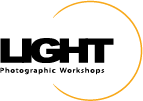by Rob Sheppard
For Southern California where I live, spring is here and flowers are blooming. California as a whole has a very long spring compared to Minnesota where I grew up. Flowers can be found year round in many areas, plus a true spring in terms of flowers starts at the end of January and doesn’t end until June.
Flowers are such a great subject, too, because they are beautiful and they never run away from you or complain about having their picture taken! We are going to have a great field workshop to explore flower photography this April at LIGHT, and it will also include very practical work in Lightroom and critiques.
One of the first things many photographers think is that they must have a macro lens to do flower photography. While a macro lens can do many good things, it can also be very limiting for flowers because it is just one focal length.
I use focal lengths from 10mm fisheye to 400mm telephoto for flowers (I shoot APS-C format; for 35mm-full-frame, equivalent focal lengths would be 15mm fisheye to 600mm telephoto; for Four Thirds, this would be 8mm fisheye to 300mm telephoto). With the two California poppy photos seen here, I used a 10mm fisheye and a 200mm telephoto. With the yellow black-eye susan flowers, I used a 16mm wide-angle, and for the white thistle, a 400mm telephoto. I focus close in three ways: I look for lenses that focus close on their own, I use extension tubes, and I use achromatic close-up lenses.
Extension tubes are just that, empty tubes that extend the lens away from the camera body (you do want the kind that connect the camera electronics to the lens electronics, though). That allows any lens to focus closer. How close you can focus depends on the focal length to extension tube size. Wide-angle lenses need minimal extension to focus very close (usually you will find it difficult to use extension tubes for lenses wider than 24mm), while telephoto lenses need more. You can get a set of Kenko auto extension tubes for almost any camera brand, and I find they work well.
Achromatic close-up lenses are highly corrected close-up lenses that screw onto the front of your lens. Canon’s achromatic close-up lenses are best known – the 500D and 250D. I have a 77mm 500D that is big enough to be used with a wide-angle lens, plus I can use adapter rings to fit it to smaller diameter lenses.
Either extension tubes or achromatic close-up lenses can make all of your lenses act like macro lenses in terms of close-focusing. Results can be quite remarkable, though the quality can only be as good as the original lens. One thing you may find is that some lenses do well up close, and others do less well, and you cannot predict this by the price of the lens.
I love to use telephotos to isolate a flower and make it stand out against a soft, beautiful background. To do that, I will often shoot wide-open for f-stop – don’t be afraid of your wide f-stops such as f/2.8, f/4. f/5.6. Telephotos also compress distance and make a group of flowers tighter and more dense. They can also enlarge a portion of the background to make it work better behind your subject.
I love wide-angles for close-ups because now I can emphasize the environment of the flower. You now get in really close to the subject, and I mean REALLY close. Often I suggest photographers set their wide-angle to its closest focusing distance, with or without an achromatic close-up lens, and then move in until the flowers are in focus to really see the possibilities here. This forces you to get close.
A wide-angle up close makes the background smaller, yet more noticeable. It can be challenging to use because of that, but on the other hand, that is exactly what makes this type of shooting interesting. Depth of field is always greater so even out-of-focus areas are recognizable. Finally, perspective is stretched out so that flowers look like they are spread apart more. That can offer some very interesting opportunities for compositions that stretch back into the distance.
Come see Rob this spring and learn these techniques and more at his Springtime Flowers and Lightroom workshop April 24-28, 2013.
Rob's free e-book, A Nature Photography Manifesto, is now available for the iPad or as a PDF e-book for any other computer. You can find the iPad interactive version at the iBooks Store. There are also links to both versions at www.robsheppardphoto.com/books.html.

